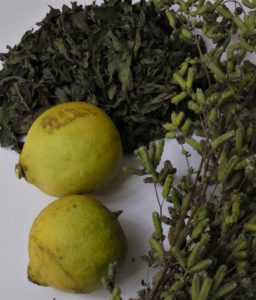Segundo Ríos
Translation: Alfonso Casani – FUNCI

The Valley of Ricote, also known as the Valley of the Moorish, is a historical region of Murcia (Spain), located in the middle basin of the Segura River. It is made up of the municipalities of Archena, Ojós, Ricote, Ulea and Villanueva del Río Segura. The Iberians and Romans first settled in the region due to its strategic value and its agricultural productivity. But it developed mainly during the period of Al-Andalus, thanks to the spreading of irrigation systems, through which the region gained great notoriety.
In 1825, the region was granted the Order of Santiago, which allowed the largely Muslim population to remain in the region until the 17th century (the expelling of Moorish from the Iberian Peninsula in 1610 had a lesser impact on the Valley of Ricote; in fact, many Muslims established themselves there). The Moorish influence has remained one of the most characteristic features of the reigon, and can be noticed in the language and in many practices and agricultural traditions.
But it is the traditional cuisine that has preserved the greatest influence of the Moorish and Al-Andalus period.
Of course, the gradual process of Christianization experienced by the Moorish changed some of these traditions. The arrival of new products from America also had a strong impact on its traditional dishes, as it happened in the rest of Spain. And yet, some dishes and recipes considered typical of the Valley have survived. Nonetheless, the most remarkable influence continues to be some of its ingredients and the way they are used.
The use of species

It is possible to highlight the following common features of the Valley of Ricote:
– The generous and diverse use of species, among them the cinnamon, used in both sweet and salty dishes. A second characteristic species is the cumin, used in stews and in the lamb “pebre”.
– The use of a wide diversity of citrus fruits, such as oranges, lemons, and tangerines, as well, as sweet limes, sour limes, lemongrass, citrons, and the bergamot orange. These are still used to acidify and marinate, as well as in the preparation of sweets. Of these, the bergamot orange (Citrus bergamia) continues to be the most relevant. Its scent, obtained from grating its surface, is unmistakable, and it is used in the preparation of desserts such as the baba, sponge cake, sweet pears, or the cordials, among others.
– The cultivation of aromatic plants such as the marjoram (Origanum paui), probably introduced by the Muslims from Syria. It is a natural hybrid cultivated in orchards and with a singular smell that differentiates it from other type of oreganos. Marjoram is essential for black pudding (morcilla de Guerra) to be at its peak. Likewise, the Moorish mint gives a particular scent to many dishes, such as the meat stew or escargots.
The scents of the bergamot orange, the marjoram or the Moorish mint are part of the Valle del Ricote’s culinary tradition, and distinguishes it as a region of ancient cultural permanences.
Ultimately, the scents of the bergamot orange, the marjoram or the Moorish mint are part of the Valle del Ricote’s culinary tradition, and distinguishes it as a region of ancient cultural permanences. But they are also scents and tastes to rediscover in a modern cuisine that needs to keep moving forward, without leaving its roots and history behind.
This post is available in: English Español

